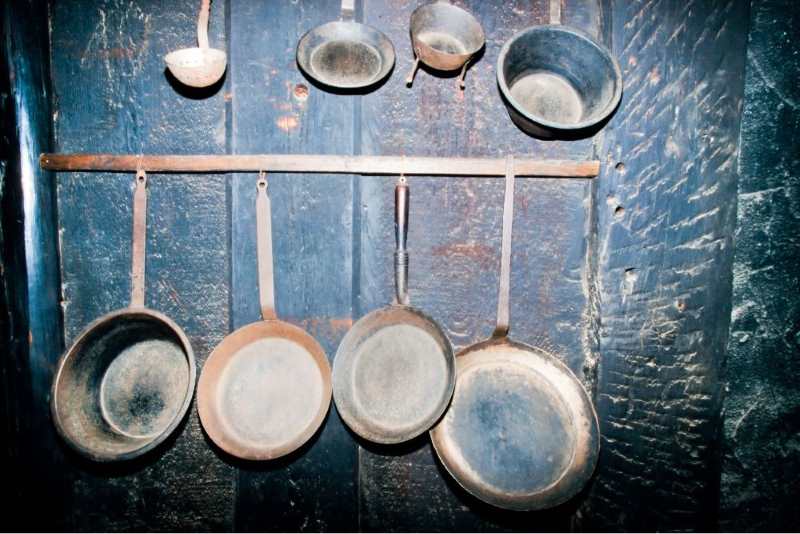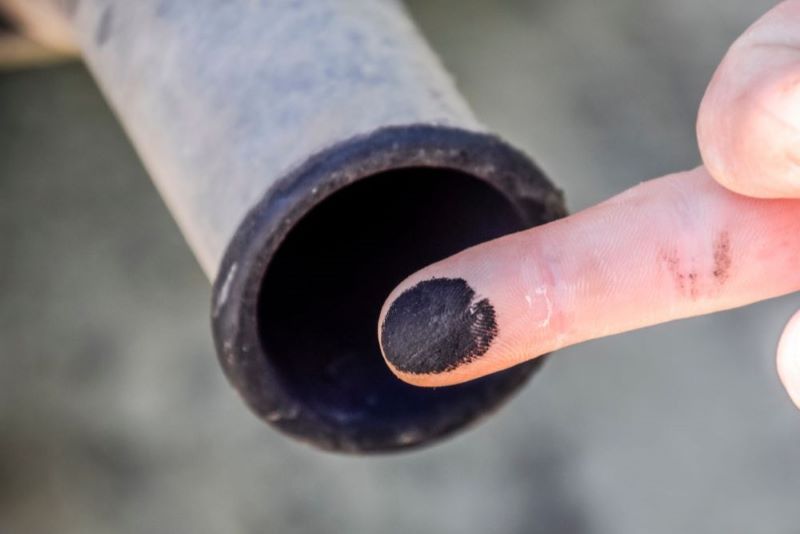Black soot is something that every homeowner will eventually deal with. Usually, it appears as a dark substance that discolours your ceiling and walls and appears out of nowhere.
Although black soot is thought to be produced by common domestic items like candles or kitchen burners, its effects are not to be overlooked. Particles from it can enter your body through the eyes, skin, or mouth, resulting in respiratory and other health issues.
And when it comes from a fire, it may get significantly worse. Far more widespread and profound effects are possible. Burning soot can cause health problems for years after it is released into the atmosphere.
To help you know what to do when black soot builds up on your property, let me explain what is black soot, why it develops, and how to clean it.
What Is Black Soot?

The thin, powdery substance known as black soot, or carbon black, is mainly made up of carbon particles. The tiny particles of black soot, usually smaller than one micrometer, can stay in the atmosphere for a long time. The reason these particles appear black is because they scatter and absorb light.
It is typically found close to industrial areas. Your home may, however, contain a significant amount of soot if you have a chimney or are hooked on lighting scented candles.
Because soot is composed of minuscule particles that can linger in the atmosphere for several days or even months, it can pose a danger.
Understanding Black Soot:
- Incomplete Combustion: Black soot forms when a fuel doesn’t burn completely. This can happen due to a lack of oxygen, a low burning temperature, or an improper fuel-to-air ratio.
- Composition: Black soot is a complex mixture of fine particles, primarily composed of unburned carbon particles. It may also contain harmful chemicals like polycyclic aromatic hydrocarbons (PAHs), known carcinogens.
What is Black Soot and What is Mould?
Most individuals have some difficulty telling the difference between mold and soot. Both of these show up as sudden black discoloration areas on your walls, carpet, or furniture.
Black Soot – It results from incomplete combustion.
Mold – This kind of fungus thrives in damp environments. It will show up to your eyes as a fuzzy white patch on the floor of your basement or as a shiny orange coat covering your kitchen drain. Mold grows steadily over time, even in the absence of external interference, because it is a living creature. It might also take on many colors, such as orange, purple, green, or white.
How Does Black Soot Develop?
When carbon-containing materials burn incompletely, black soot develops. Pyrolysis is the process that occurs when organic materials burn, such as wood, biomass, fossil fuels (coal, oil, and natural gas), and even some kinds of candles. When these materials are heated without enough oxygen needed for full combustion, pyrolysis takes place.

Pyrolysis is the process by which complex organic molecules disintegrate into simpler substances, such as soot, which is solid carbonaceous particles, and volatile gasses. Although carbon makes up the majority of soot, it can also contain trace amounts of nitrogen, sulfur, oxygen, hydrogen, and other elements.
Several factors, like a lack of air, low temperatures, or insufficient fuel and oxygen mixing, can lead to incomplete combustion. Under these circumstances, there is not enough oxygen present in the carbon-containing molecules for them to completely react and form carbon dioxide (CO2), which is the intended byproduct of complete combustion. Rather, they release carbon particles and carbon monoxide (CO), that combine to form soot.
Black Soot Frequent Cleaning Tips
The source of the soot, the amount of buildup, and the kind of surface or object impacted all influence how often soot needs to be cleaned. The following are tips for cleaning different areas of your property:

Heating Appliances
When it comes to cleaning and maintaining oil or gas furnaces, follow the manufacturer’s instructions. While some systems may only need yearly professional maintenance, others may require more frequent maintenance.
Soot from Cooking Equipment and Scented Candles
Quickly clean any contaminated places or equipment that produces soot. Frequent cleaning will ease future cleaning and prevent heavy buildup.
Soot on Household Things
Clean furniture, electronics, and decorative things as needed if soot builds up on them. To prevent breaking any object, it’s best to use cleaning solutions and techniques that are appropriate for that particular item.
Stove or fireplace that Burns Wood
If you use the stove or fireplace frequently, make sure you clean the flue or chimney more frequently than once a year.
Surfaces, Walls, Ceilings
To stop soot from spreading even more, clean any walls, ceilings, or other things that you see to have soot on them. How serious the issue is will determine how often it needs to be cleaned. You may reduce the buildup by regularly dusting and cleaning.
Keep in mind that these are only tips; various cleaning routines may be needed for particular circumstances.
Tips for DIY Black Soot Cleaning
Use the proper tools and techniques when cleaning soot to prevent the particles from spreading and increasing the damage. Here are a few tips for DIY black soot cleaning:

Let Some Fresh Air into the Area
Before cleaning, open windows and turn on fans to increase airflow and prevent soot particles from entering your lungs.
Put On Safety Gear
To protect yourself from soot particles, put on safety goggles, rubber gloves, and a respirator or dust mask.
Apply Baking Soda
For creating a paste, combine a spoonful of baking soda with a small amount of water. Apply the paste to soot stains and let it set for a few minutes, then remove it with a sponge or damp towel. After rinsing, completely dry the area.
Apply Vinegar-Based Mixture
Equal parts vinegar and water should be combined in a spray container. On the black soot stains, spray the solution, use a towel or sponge to gently clean, rinse, and then completely dry.
Dishwashing Detergent
Add a small amount of dishwashing detergent to some warm water. Dip a sponge or cloth into the solution and carefully clean the affected area. Then, rinse and dry the black soot-stained area.
Use Cleaning Sponges
To draw and remove soot from every kind of surface, use dry-cleaning sponges. Clean the damaged area with a sponge and repeat the process a few times.
Wipe out Any Loose Black Soot
Using a dry sponge or a vacuum with a brush attachment, carefully remove any loose black soot. Keep the soot from being scrubbed or pressed into surfaces more.
To be sure there is no damage or discoloration, always test any cleaning solution on a tiny, discrete area before using it on a larger surface. Consult with a professional restoration company with experience handling smoke and soot damage if the black soot stains are severe or challenging to remove.
Frequently Asked Questions (FAQs)
Is black soot harmful to your health?
Yes, breathing in black soot particles can be harmful to health, especially for individuals with respiratory conditions such as asthma and allergies. Prolonged exposure to soot may also increase the risk of cardiovascular and respiratory diseases.
Can black soot cause fires?
While black soot itself is not flammable, it can accumulate on surfaces and pose a fire hazard if ignited by an open flame or heat source. It’s essential to remove black soot buildup from surfaces regularly to reduce the risk of fires.
How can I prevent black soot buildup in my home?
To prevent black soot buildup, ensure proper ventilation in your home, maintain appliances regularly, and avoid using unvented combustion sources indoors. Keep surfaces clean and free of dust and debris to minimize soot accumulation.
What should I do if I discover black soot in my home?
If you discover black soot in your home, take steps to clean it up promptly using appropriate cleaning methods and agents. Address any underlying issues such as poor ventilation or malfunctioning appliances to prevent future soot accumulation.
Can professional cleaning services remove black soot?
Yes, professional cleaning services specializing in fire and smoke damage restoration can effectively remove black soot from surfaces in your home using specialized cleaning techniques and equipment.
Conclusion:
Understanding what black soot is, its causes, and effects, and how to remove it is essential for maintaining a clean and healthy living environment. By following the removal tips outlined in this guide and taking preventive measures, you can effectively manage black soot buildup and keep your home clean and safe for you and your family.

